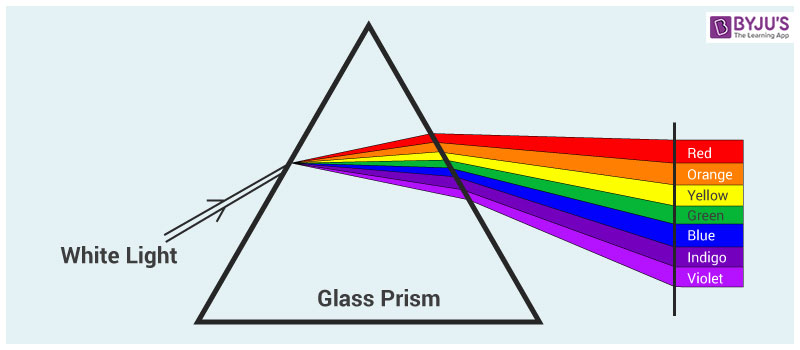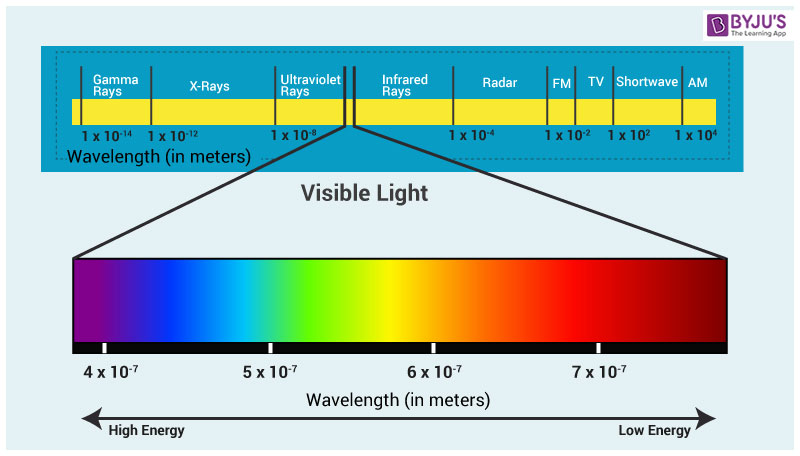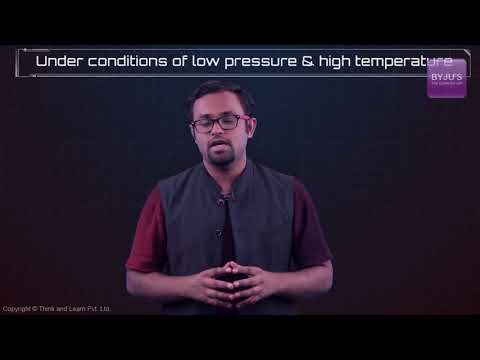Visible light waves are a form of electromagnetic radio waves such as infrared radiation, X-rays, microwaves, and ultraviolet radiation. We can see these waves as the colors of the rainbow where each color includes a different wavelength. Red has the longest wavelength and violet has the shortest one. When all the waves are seen together, they form white light. When white light comes through the prism, it gets broken into the colors of the visible light spectrum.

EM radiation can be transmitted in waves or particles at different frequencies and wavelengths. This wide variety of wavelengths is known as the electromagnetic spectrum. It is divided into seven areas in decreasing order of wavelength and increasing order of energy and frequency.
What is the visible light spectrum?
The portion of the electromagnetic spectrum that is visible to the human eye is known as the visibe light spectrum. Visible light range comes under the range of EM spectrum between infrared and ultraviolet having a frequency of about 4 x 10 14 to 8 x 10 14 cycles per second and wavelengths of about 740 nanometers or 2.9 x10 -5 inches to 380 nm.

Color
The most important characteristics of visible light are color which is both an inherent property of light and an artifact of the human eye. Our eyes include specialized cells known as cones. These cones act as receivers that are tuned to the wavelength of the narrowband of the EM spectrum. Light at the lower end of the visible spectrum has a longer wavelength of about 740 nm. It is seen as red, green in the middle, and violet at the upper end of the spectrum having a wavelength of about 380 nm.
Color and Temperature
As the object gets hotter with the temperature, they radiate energy which is dominated by shorter wavelengths by changing its color before our eyes. For instance, a blow torch turns bluish from reddish as it is adjusted to burn hotter. The sun produces yellow light than any other color as its surface temperature is 5,500°C. If the sun’s surface is cooler, 3,000°C then it would look reddish. If the Sun is hot, 12,000°C then it would look blue.
You may want to check out the following video for a better understanding of the characteristics of UV, IR and visible light and how they vary from each other.

Stay tuned with BYJU’S to learn more Physics concepts with the help of interactive video lessons.


Comments